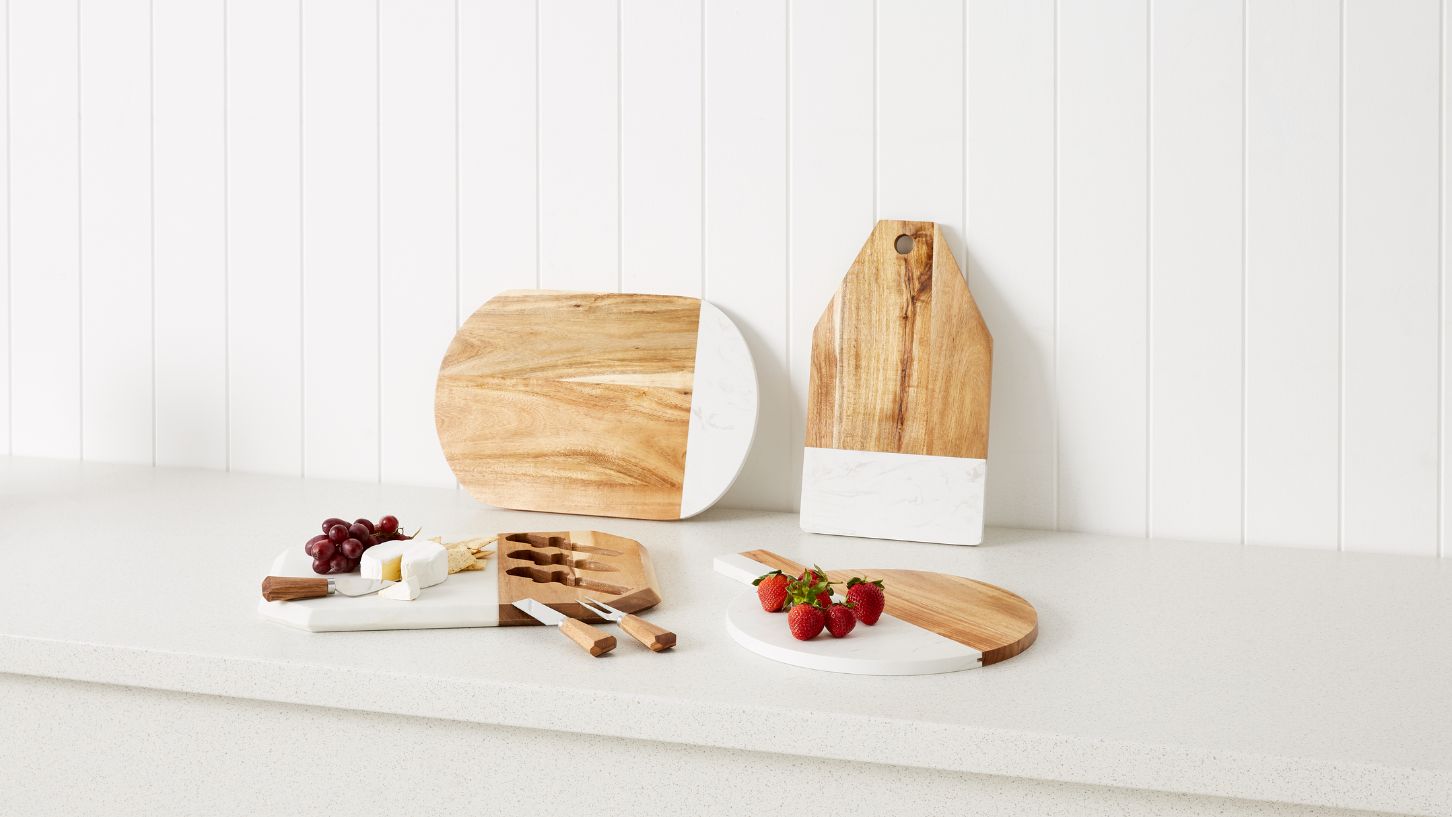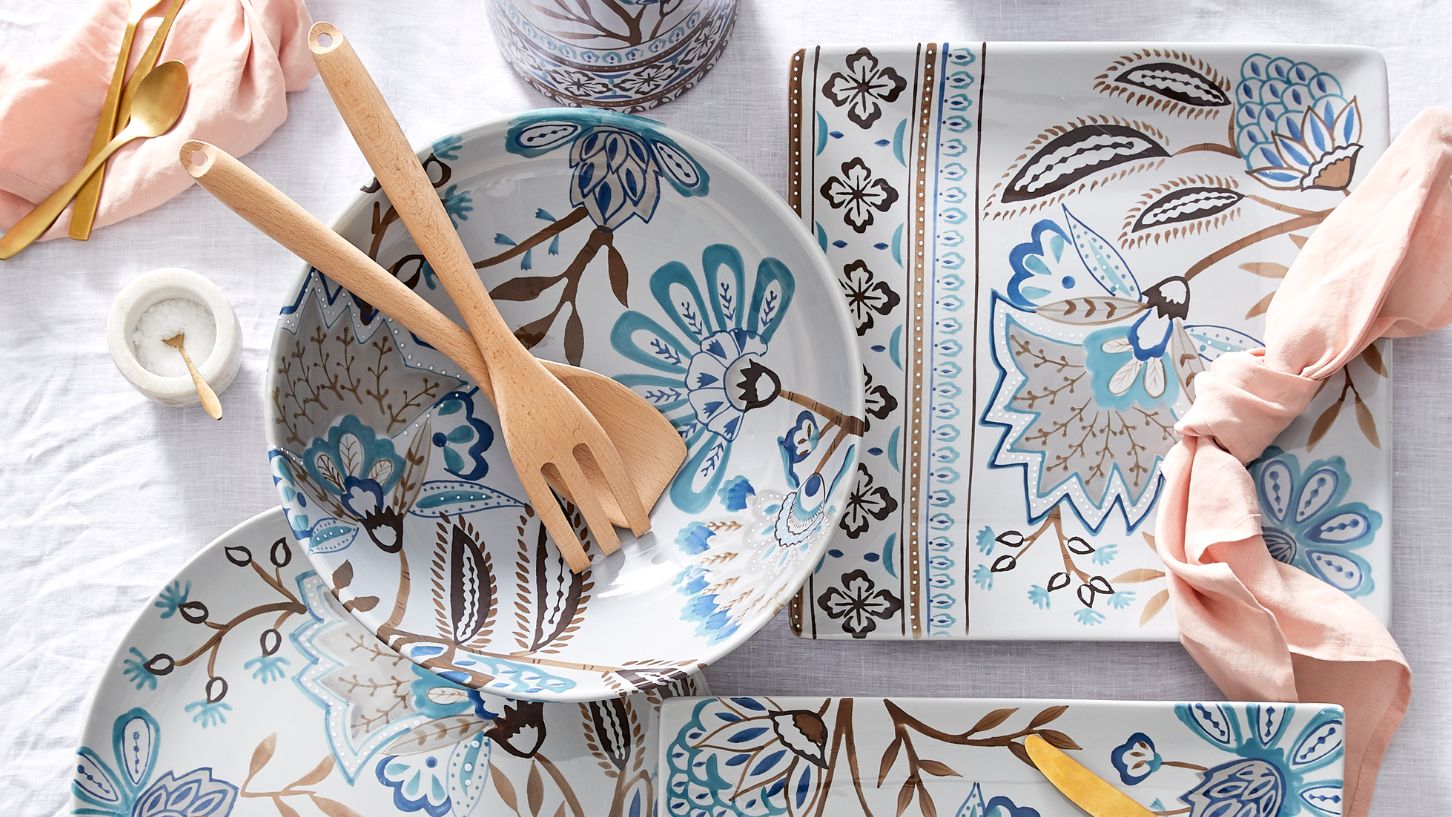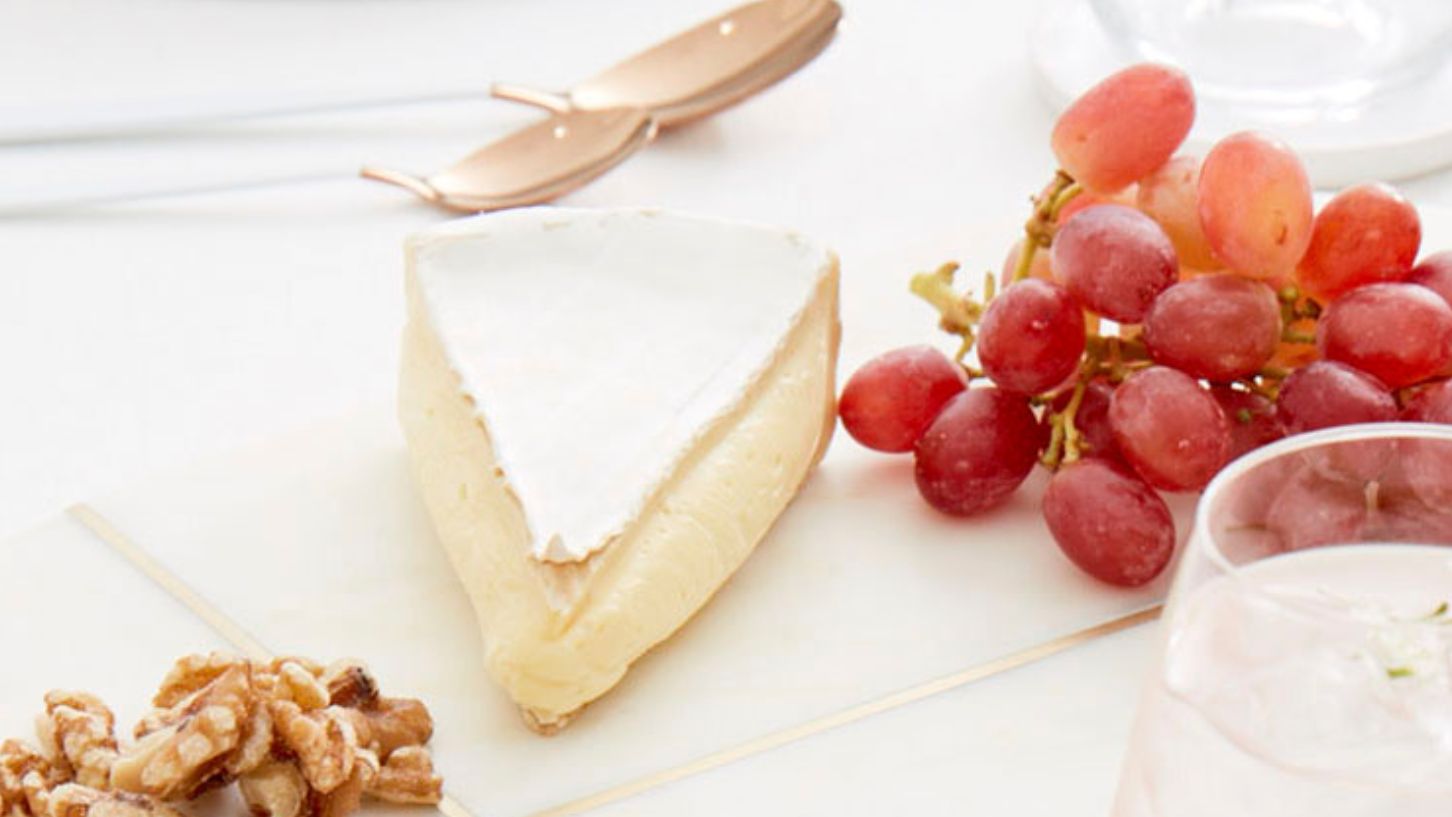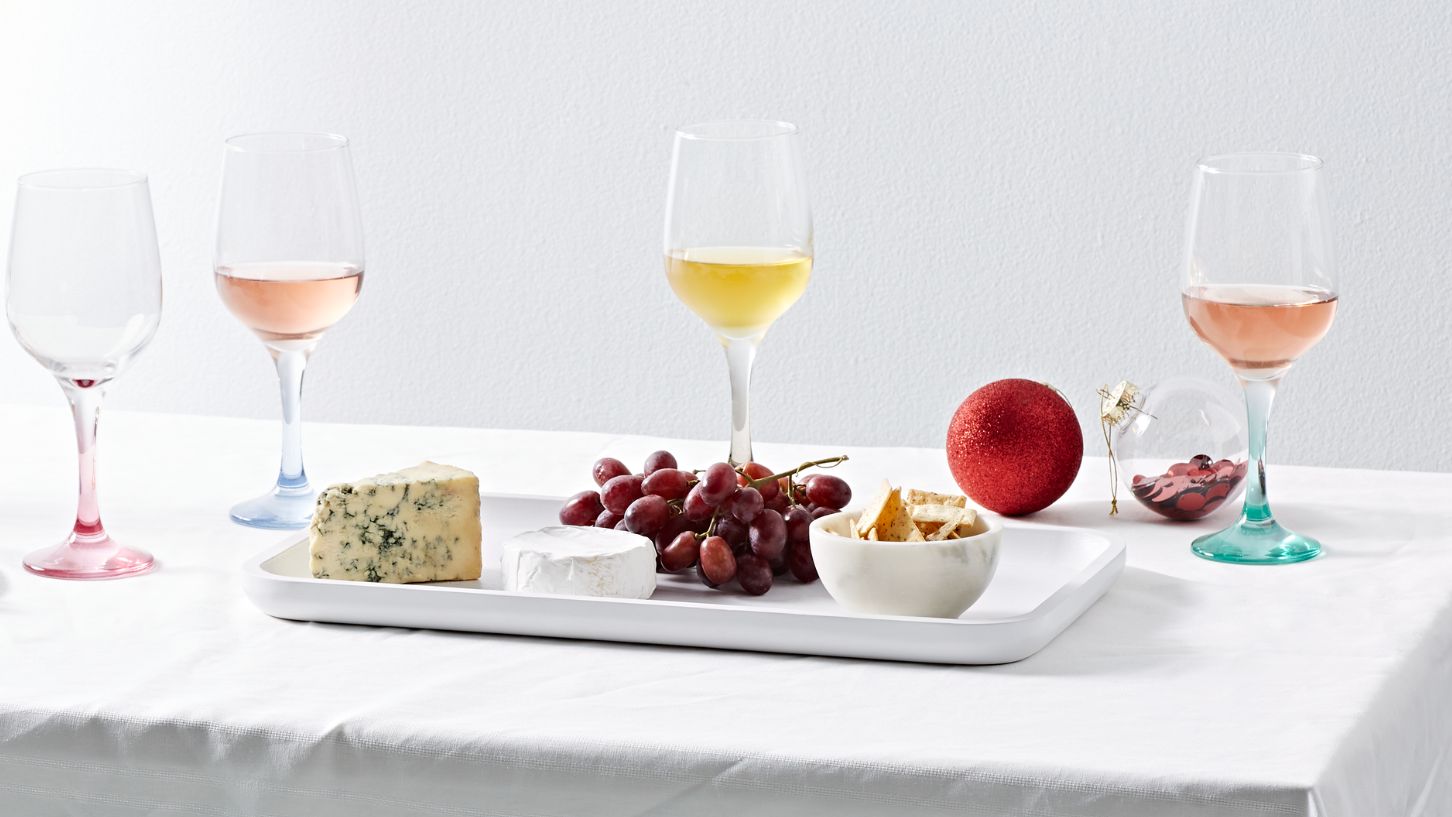| Your browser is not supported. | ||
|
Please browse our site using any of the following options:
| ||
Cheese Platter Ideas: The Ultimate Guide

Picture this: a vibrant canvas adorned with exquisite cheeses, delicately arranged with precision and love. The cheese platter is no ordinary appetiser - it is a masterpiece in its own right, inviting you to explore an array of flavours, textures, and aromas. It's the embodiment of elegance, bringing people together to indulge in moments of culinary bliss. But why have cheese platters become the darling of every party? Simple! They offer unrivalled versatility. Whether hosting an intimate gathering or a grand celebration, a cheese platter can be customised to suit any occasion, taste preference, or dietary restriction. Looking for cheese and meat platter ideas or fruit and cheese platter ideas? We've got you covered. The possibilities are endless! As you read further, prepare to immerse yourself in a world of cheese platter ideas and inspiration that will ignite your imagination. From exploring different cheese varieties to selecting the perfect accompaniments, we'll guide you every step of the way. Discover the art of balancing flavours, the joy of pairing cheeses with exquisite fruits, nuts, and condiments, and the sheer pleasure of curating a platter that leaves a lasting impression. Let's dive in.
Quick Links
- Frequently Asked Questions
- How To Select The Best Cheese For Your Cheese Platter
- How To Select The Best Meats For Your Cheese Platter
- How To Make The Best Cheese Platter
- 4 Tips For Making The Best Cheese Platter
- Best Cheese Platter Ideas For Entertaining Like A Pro
Commonly Asked Questions

What is a cheese platter?
Fondly enjoyed since the Middle Ages, a cheese platter is also known as a 'charcuterie board', a French cooking branch that showcases cold cured meats such as pâtés, sausage, confit and ham. Showcasing a board full of different cheese, meats, condiments, bread and crackers, a cheese platter is subjective and versatile, making it perfect for entertaining a variety of guests.
How many cheeses should be on a cheese board?
There is no official rule, so it is completely up to you how many different types of cheeses to put on your charcuterie platter. If you plan on making an average-sized cheese platter, the typical amount would be three types of cheese. However, if you are entertaining a large group of guests, five types of cheese would be enough. But again, it's completely up to you.
What jam goes with a cheese board?
It all depends on the flavour profiles and intensity of your cheese. For example, a mild cheddar cheese will pair very well with something sweet like a strawberry or fig jam, whereas a bold cheddar will have more bite to it so that it will go perfectly with a chutney or a chilli jam.
What sauces go on a cheese board?
Just like jam, the types of sauces and dips you put on your cheese platter will depend on the types of cheeses you are using. If you're creating a cheese and dip platter, hummus has a creamy taste and is perfect for balancing out saltier cheese such as blue cheese and feta, whereas honey is great for enhancing cheese like brie and camembert.
Does mustard go with cheese?
Yes, it does! In fact, mustard goes very well with cheese. For example, an aged cheddar will pair perfectly with a sweet type of mustard, and a younger cheddar will taste delicious with stone-ground mustard.
Can you put celery on a cheese board?
As there are no official rules of what you can and can't put on your cheese platter, yes, you can add celery. In fact, celery sticks are the perfect option when grazing on hard cheese such as Pecorino Romano, Grana Padano and Gruyère.
How To Select The Best Cheese For Your Cheese Platter
Luckily you don't have to go to a fromagerie or a cheesemonger to find a variety of quality cheese - most can be easily found in your local supermarket. When shopping for your cheese platter, you'll want to consider the taste and texture of the cheeses you are getting. And remember that you'll be entertaining a group of people who each have their own preferences, so a little bit of everything is going to be a smarter choice. You'll want a hard cheese like Gouda or Parmigiano Reggiano, a soft cheese like Camembert or fresh Mozzarella, and a smoked cheese like smoked cheddar or Provolone. Avoid smelly cheese such as Gorgonzola and Epoisses unless you know every guest.
How To Select The Best Meats For Your Cheese Platter
When choosing meats for your cheese platter, it is best to match the number of meats with the number of cheese you have. It is also good to have a variety of different textures, just like with the cheese. A good choice is to have dry meat like salami or prosciutto, smokey meat like chorizo and tender meat like ham or pastrami. And when it comes to adding the meat, always remember that the meat has to be sliced very thinly. You don't want the meat to overpower the cheese and be awkward to eat when everything is piled on, especially in a formal setting.
What To Put On A Cheese Platter Board
1. Build A Base
Your first consideration in creating a simple charcuterie board is the board itself. Choose a quality wooden chopping board or platter big enough to hold treats for all your guests. Next, add small serving bowls across the board. These can be filled with chutneys, mustards and dips - all wonderful grazing table ideas - or small items like olives and nuts. Bowls are also great structures to build your charcuterie board around.
2. Add Your Cheese
Need cheese board ideas? Head to delis or cheesemongers for interesting local and imported finds. For a well-rounded cheese board, plan to include one familiar flavour (a cheddar, for example), one exciting flavour (something new or rare), two varieties of milk cheeses (usually cow's milk and goat's milk) and one aged cheese (for sharper, deeper flavours). Pre-cutting the cheese makes your board easy to serve and adds the style factor considerably. Aim for a variety of shapes and textures arranged around the board, allowing generous access for your guests.

Types of cheese for a delish cheese platter board
Soft Cheeses: Pillows of Creamy Bliss
When it comes to soft cheeses, think about luxurious and velvety textures that practically melt in your mouth. Experiment with a variety of options like Brie, Camembert, or creamy goat cheese. These delicacies will bring a touch of sophistication to your platter, offering a delectable contrast to the other cheese varieties. Soft cheeses, like the velvety treasures they are, prefer a cool and gentle touch. Bring them out of the fridge about 30 minutes before serving to allow their flavours to bloom. Picture this: a silky Brie or a sumptuous Camembert oozing at the edges, reaching the perfect spreadable consistency. This chilled cheese adds extra allure to your cheese platter board.
Semi-Soft Cheeses: The Perfect Middle Ground
For those seeking a middle ground, semi-soft cheeses are the answer. Think about options like Gouda, Havarti, or Fontina. They provide a lovely balance between softness and firmness, with flavours ranging from mild buttery to nutty and slightly tangy. These versatile cheeses are crowd-pleasers and play well with other flavours. When it comes to semi-soft cheeses, you want to find that sweet spot of coolness that enhances their supple textures. Take your Havarti, Gouda, or Fontina out of the refrigerator 15 to 20 minutes ahead of time. You want them to be cool to the touch but still yielding, allowing their complex flavours to shine through without overpowering the palate.
Hard Cheeses: A Symphony of Aged Excellence
Hard cheeses are like fine works of art that have been patiently aged to perfection. Explore the realm of Cheddar, Gruyère, or Parmigiano-Reggiano. With their robust and complex flavours, these cheeses will add depth to your platter, providing a satisfying crunch and a delightful, lingering taste. bout 20-30 minutes prior to serving, remove your cheese from the fridge. They become more malleable at room temperature, granting you the pleasure of experiencing their robust flavours and hearty textures at their finest.
Blue Cheeses: Bold and Adventurous
Are you ready to add some excitement to your cheese platter? Look no further than blue cheeses! These beauties, such as Roquefort, Gorgonzola, or Stilton, boast a piquant tang and distinct veining that add an adventurous flair to any platter. Their creamy texture and bold flavour will leave a lasting impression on your palate. For these intense delights, aim for a slightly cooler serving temperature. Remove them from the refrigerator 15-20 minutes in advance, allowing their creamy richness to soften just enough to tantalise your taste buds with their piquant tang.
Unique and Local Gems: Discover the Unexpected
Don't be afraid to explore local or artisanal cheeses that reflect the flavours and traditions of your region. Seek out lesser-known varieties with unique characteristics that surprise and delight your guests with a gourmet cheese platter. You might discover hidden gems like tangy goat cheeses infused with herbs or smoky Gouda with a touch of sweetness. Need some more inspiration for your party cheese platter? Then try these creative cutting styles:
- The mini triangle: Small wheels of soft cheese, like brie, can be sliced in half to form semi-circles. Add cheese serving knives so people can help themselves.
- The wedge: harder cheeses like gouda can be pre-cut into wedges for serving. Slice generously and cut diagonally into triangles. Placed upright on the board, with the short side of the wedge vertical, these can form attractive shapes.
- The crumble: Hard, crumbly cheeses like aged cheddar call for a more rustic look. Crumble into bite-size pieces and form a pile on the board
- The fan: Slice harder cheeses like manchego into thin wedges, then fan out on the board for a gorgeous and tasty display.
- The slice: Slice a small wedge of soft cheese and place it slightly away from the rest of the block, giving a nice visual effect and providing a clear starting point.
3. Add Your Extras
- Need cheese and meat platter ideas? Select quality smoked and cured meats to compliment your cheeses. Again, think in terms of visual presentation as much as taste. Prosciutto looks delectable, casually scrunched on a board, thinly sliced salamis and hams can be folded or rolled, while sausage rounds can be piled up for easy picking.
- Add a few small stacks of crackers to the board. For bread, simple is best, so avoid strong flavours. (Baguette slices are a classic for a reason, balancing elegant looks with a deliciously crusty texture.) Place small piles of almonds, Brazil nuts or pistachios across the board for even more crunch.
- If you're looking to add fruits, read on for some amazing fruit and cheese platter ideas. Fruits and fresh vegetables help cut through the big flavours and fats of cheese and meat, and they're a lovely opportunity to add colour to your board as well. Grapes, berries, cherry tomatoes, and cut figs are perfectly sized for grazing and nibbling. Celery, cucumber, and carrot sticks work well, too. It may seem odd to layer on sweetness with meat and cheese, but a grazing platter is designed for guests to enjoy however they like, and if that means a little chocolate in between savoury mouthfuls, then so be it. Dried fruits - apples, apricots, dates - are perfect additions, as are dark chocolate or toffee shards. Fruit-packed baked goods, like jam drops or small chunks of fruit cake, are unexpected but delicious.
4. Garnishing Your Cheese Platter
A sprinkling of fresh herbs or edible flowers is the final touch to a stunning grazing plate. Most elements are best served at room temperature, so the board can be assembled up to an hour ahead and kept covered. Add breads and crackers just before serving, along with any garnishes. Then let your guests dig in and enjoy.
4 Tips For Making The Best Cheese Platter

1. Consider Palate Cleansers
Apart from the cheese and meat, it's important to consider the in-between accompaniments. These will act as palate cleansers or "remise en bouche", the little bites that will help your guests go from a smokey cheddar to a smooth brie. As they will be helping the palate transition from salty to sweet, it's best to have a variety of little nibbles around your cheese platter, such as:
- Olives
- Tomato relish
- Nuts such as cashews
- Crackers such as sesame crackers
- Dried fruit such as apricots
- Fresh fruit such as grapes
2. Consider The Texture & Taste Of The Cheeses
We've said it before, but when it comes to a cheese platter board, diversity is the name of the game. No one wants to dig into a cheese board only to find a selection of soft cheese that all has the same salty taste. Some helpful ways to make sure you aren't choosing the same type of cheeses can be:
- Showcase a selection of cheese from the same country.
- Select cheese that is only made from one type of milk or each type of milk, like sheep, goat and cow milk.
- Stick to the three main tenets of selecting cheese: something soft, something hard and something creamy.
3. Consider Beverages For Your Party Cheese Platter
Wine: Unveiling the Tannin Tango
- Bold Reds: Pair robust, hard cheeses like Cheddar or Gruyère with a velvety Cabernet Sauvignon or a rich Malbec. The bold flavours and tannins in the wine beautifully complement the hearty textures of the cheese, creating a harmonious dance on your palate.
- Crisp Whites: Soft cheeses such as Brie or Camembert are a match made in heaven with a crisp Sauvignon Blanc or a buttery Chardonnay. The refreshing acidity of these wines cuts through the creaminess of the cheese, awakening your taste buds with each sip.
Beer: Hoppy Hints and Malty Magic
- IPAs and Ales: Pair the citrusy and hoppy notes of an IPA with tangy blue cheeses like Roquefort or Gorgonzola. The bitterness of the beer harmonises with the intense flavours of the cheese, resulting in a taste explosion.
- Belgian Tripels and Saisons: Opt for the fruity and spicy complexities of a Belgian Tripel or a Saison when enjoying semi-soft cheeses like Havarti or Fontina. The effervescence and yeast-driven flavours of these beers beautifully complement the delicate flavours of the cheese.
Non-Alcoholic Delights: Zesty Zing and Refreshing Bliss
- Sparkling Water with Citrus: The effervescence of sparkling water paired with a squeeze of lemon or lime adds a zesty and refreshing touch to any cheese platter. This combination cleanses the palate, allowing you to appreciate each cheese's nuances fully.
- Herbal Infusions: Try herbal infusions like mint, chamomile, or ginger tea. The aromatic and soothing qualities of these beverages create a lovely contrast when enjoyed alongside the rich and savoury flavours of cheese.
Unexpected Combos: Get Creative!
Don't be afraid to experiment and think outside the box with your pairings. Consider local craft beers, unique wine varietals, or artisanal non-alcoholic drinks that reflect the flavours of your region. Let your taste buds guide you on a journey of discovery, and you might stumble upon unexpected flavour combinations that will blow your mind!
4. Consider The Guests
It's also important to consider how your guest will interact with your cheese platter. Will all the cheese be presliced, or will everyone have to slice a piece of cheese and meat each time? It's better not to let the guests do the slicing themselves altogether - unless you want to risk someone scooping out the middle of a creamy camembert and leaving the sides for everyone else.
Best Cheese Platter Ideas For Entertaining Like A Pro
When it comes to throwing an amazing party that no one will ever forget, never underestimate a good cheese platter board! Armed with an arsenal of cheese platter ideas and inspiration, it's time to embark on your own cheese platter escapades. So gather your loved ones, raise your glasses, and toast to the magic of cheese. Cheers to the endless possibilities and the remarkable journey that lies ahead. Make sure you have everything you need by browsing our range of cheese knives and dinner sets. Your cheese adventure awaits!
For more helpful information, cooking tips, delicious recipes, and more, check out our food hub at Harris Scarfe.